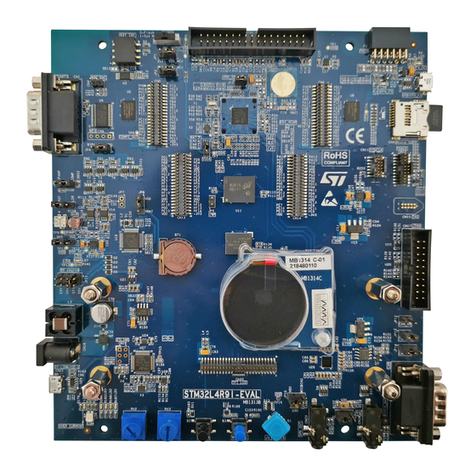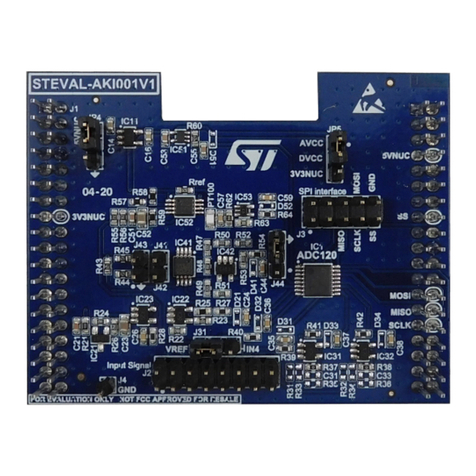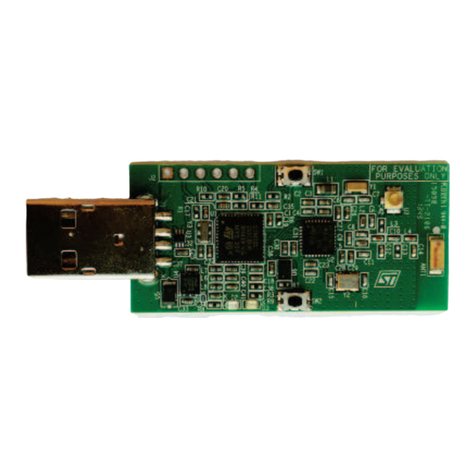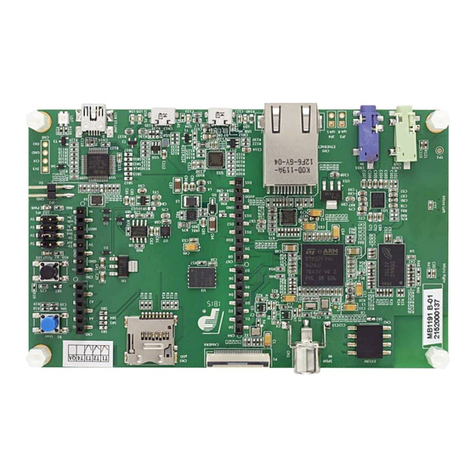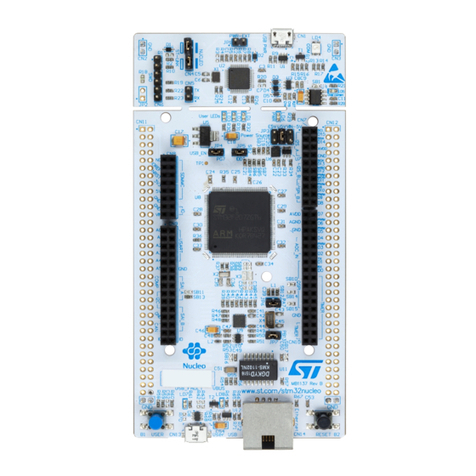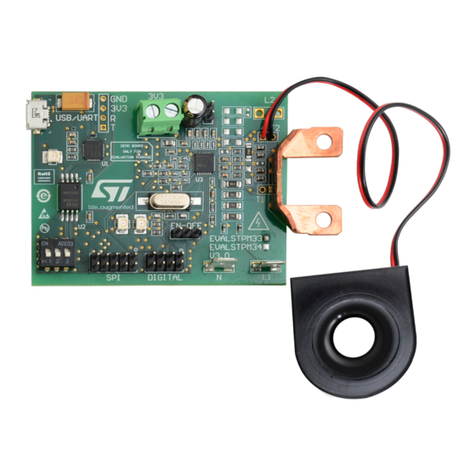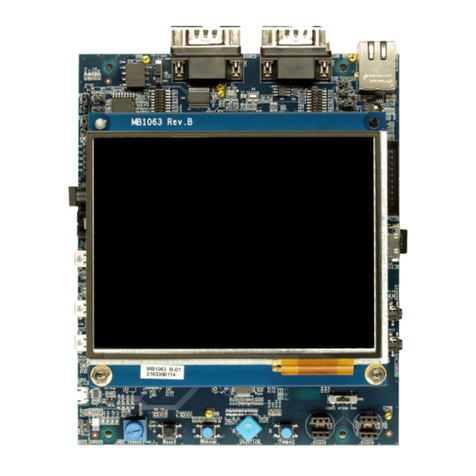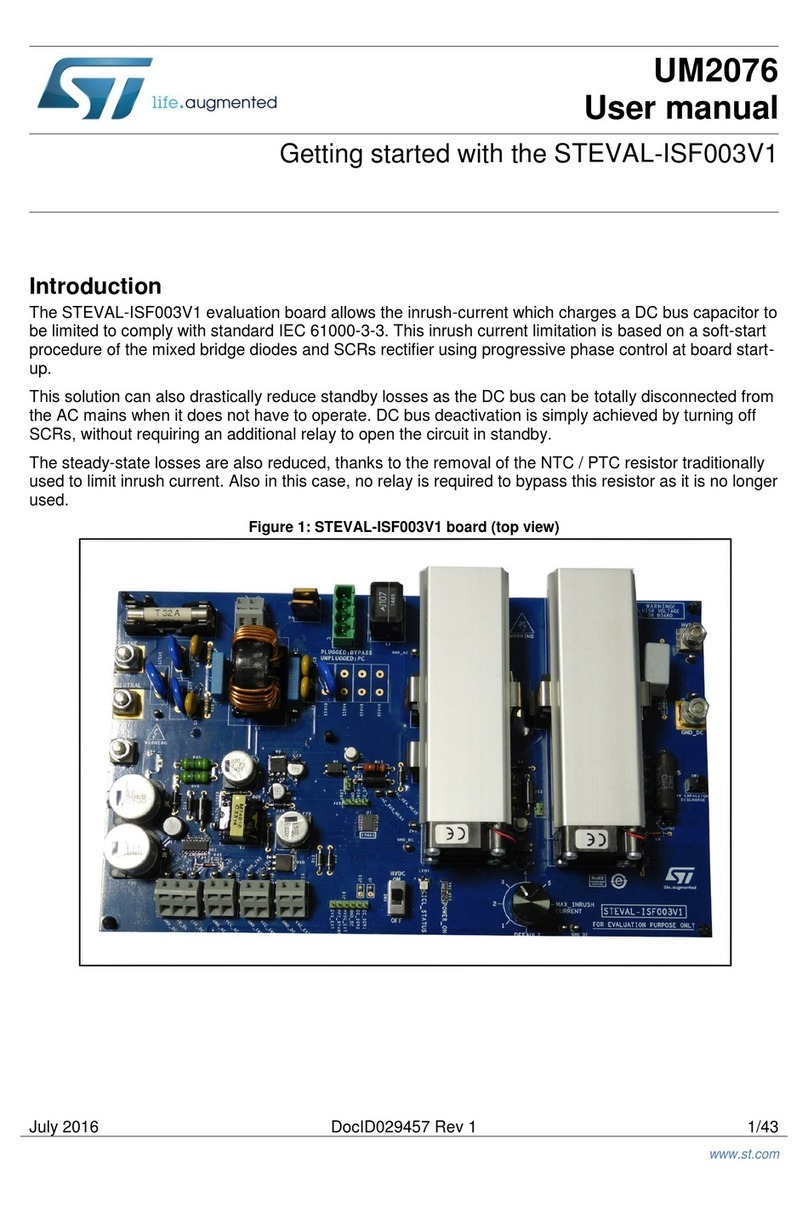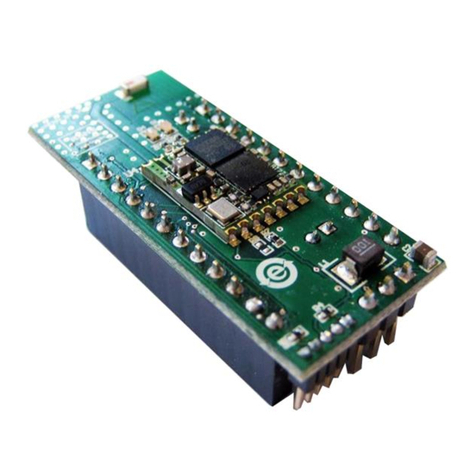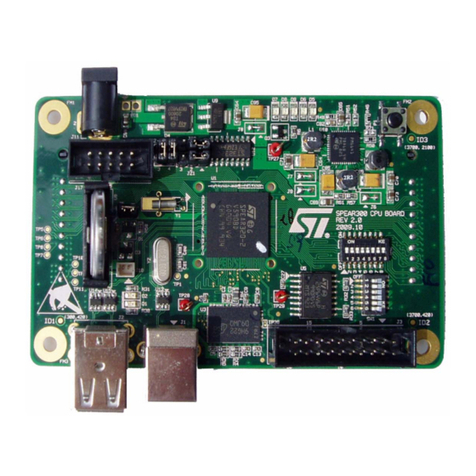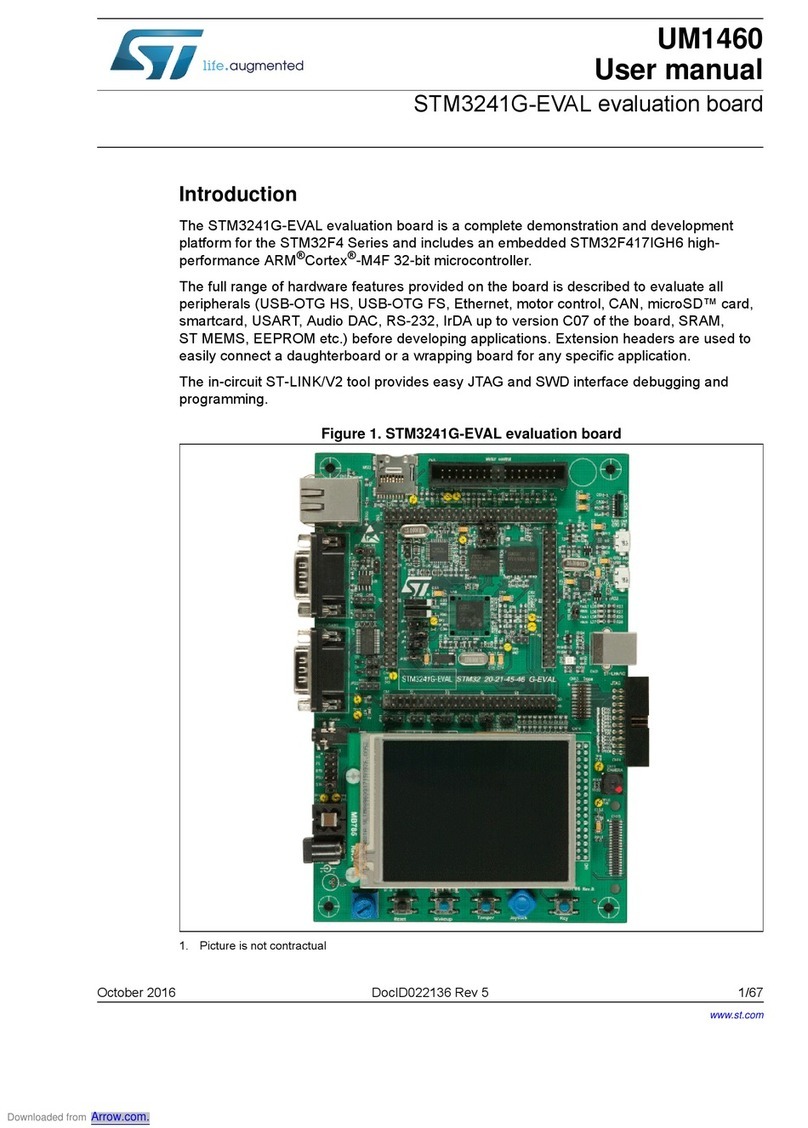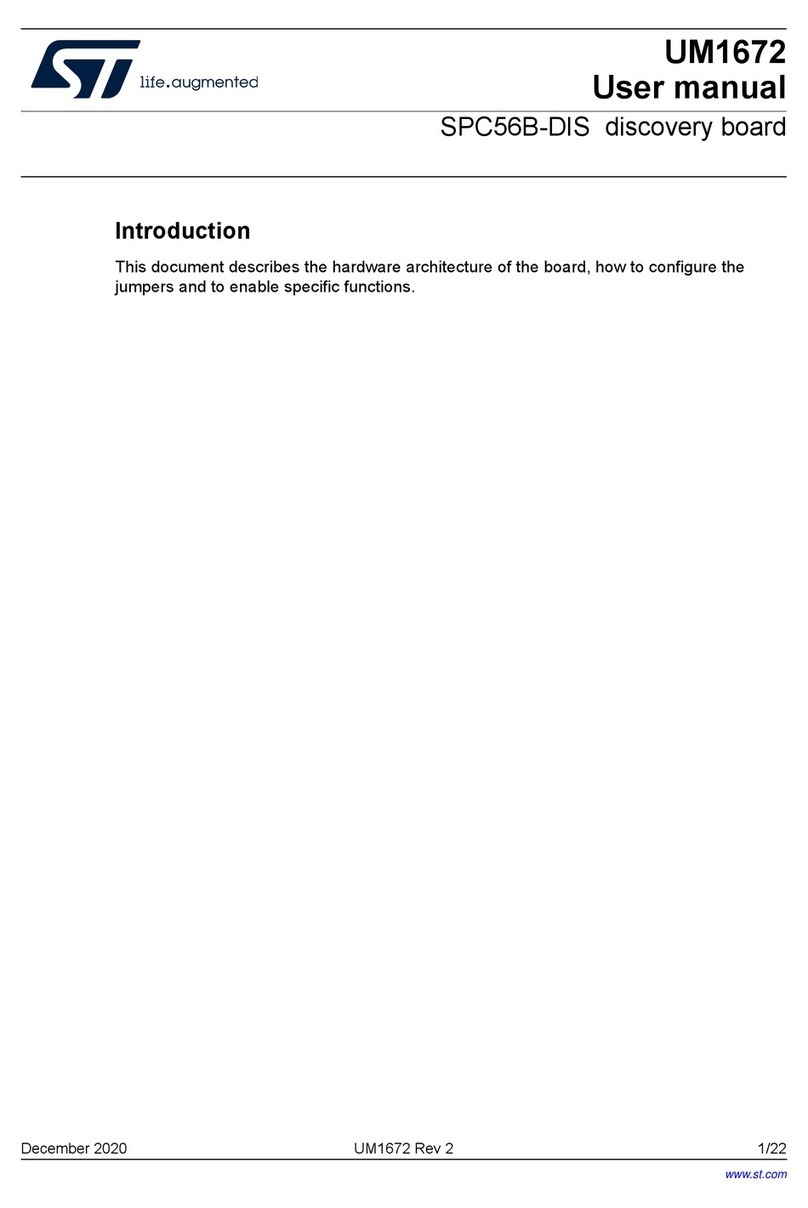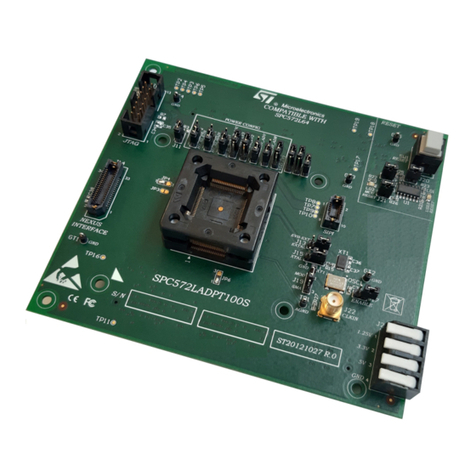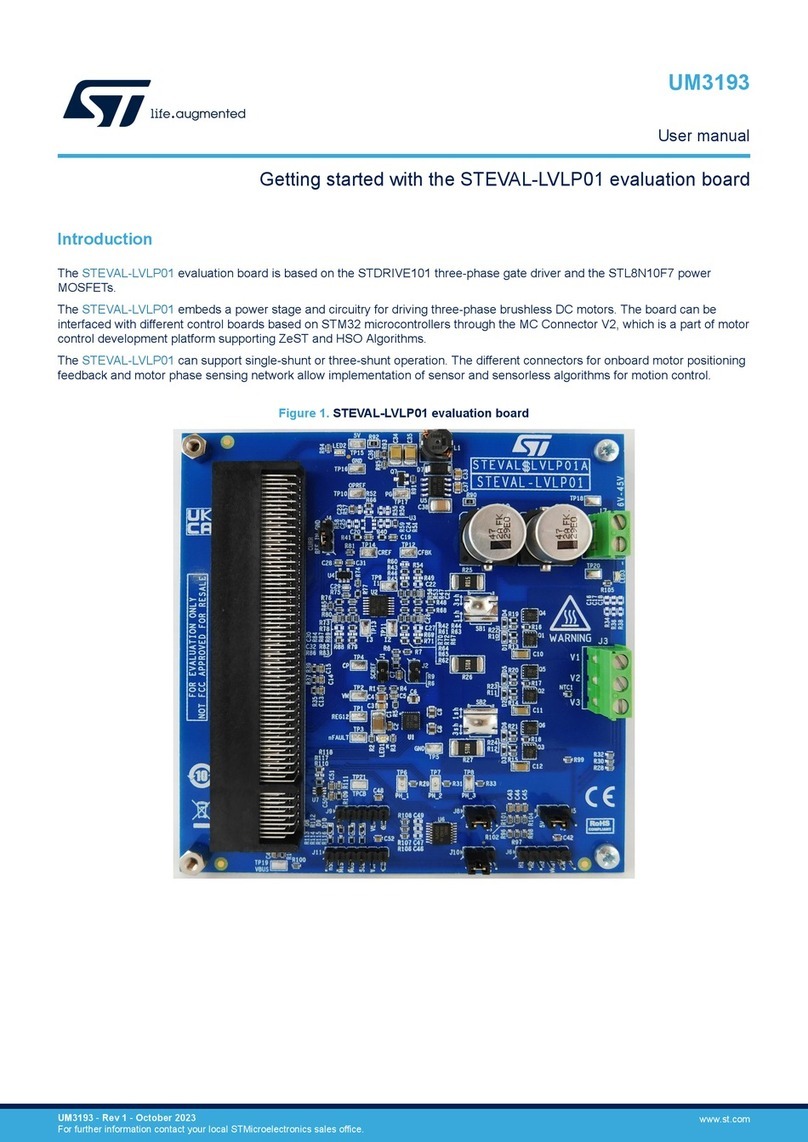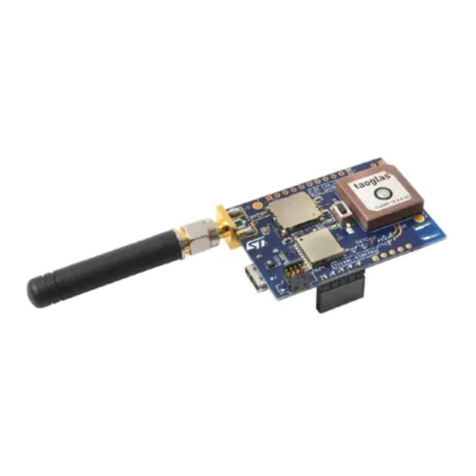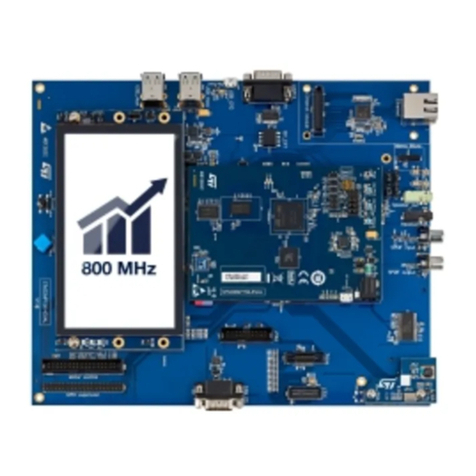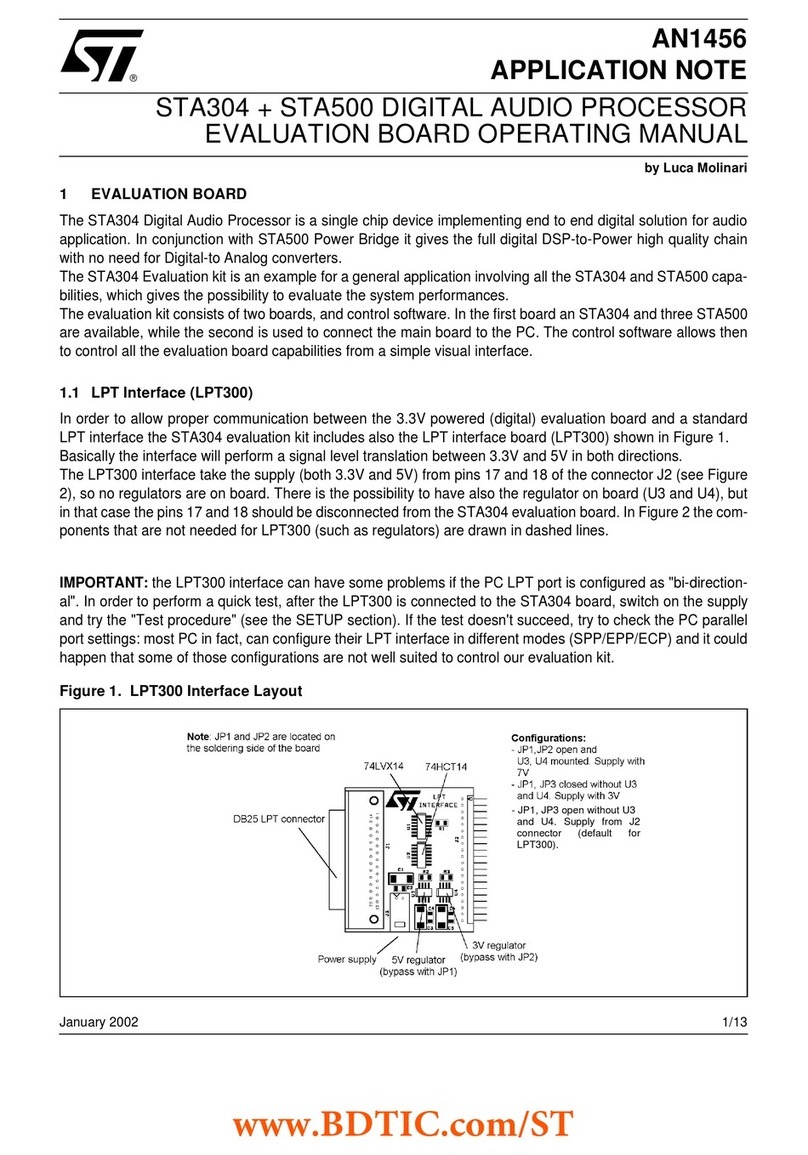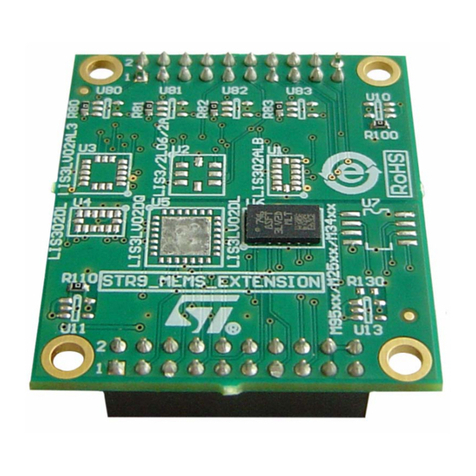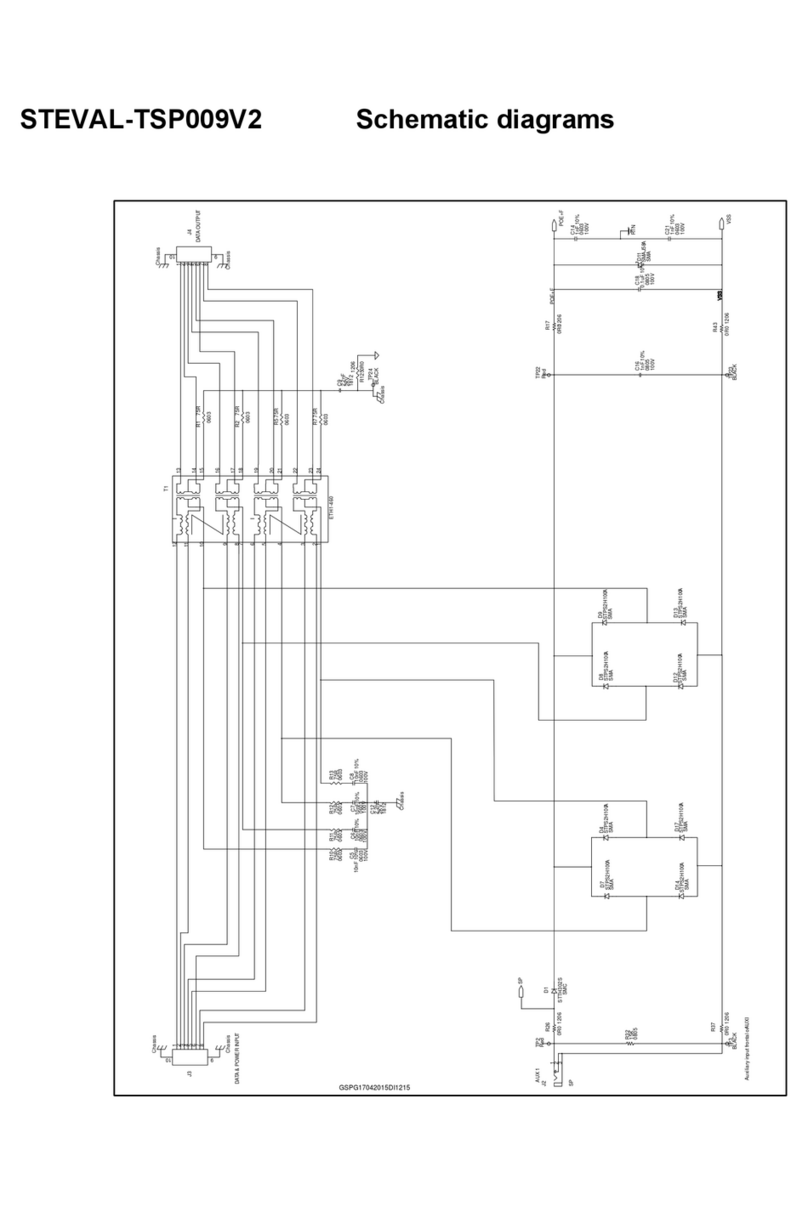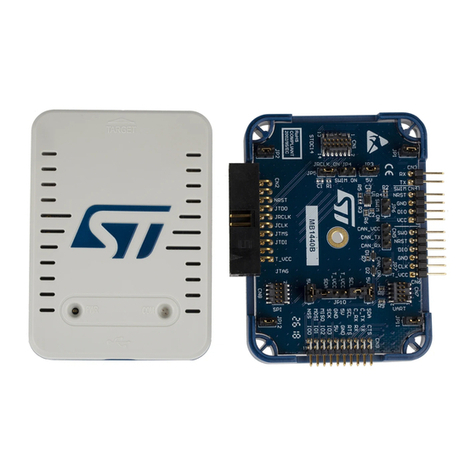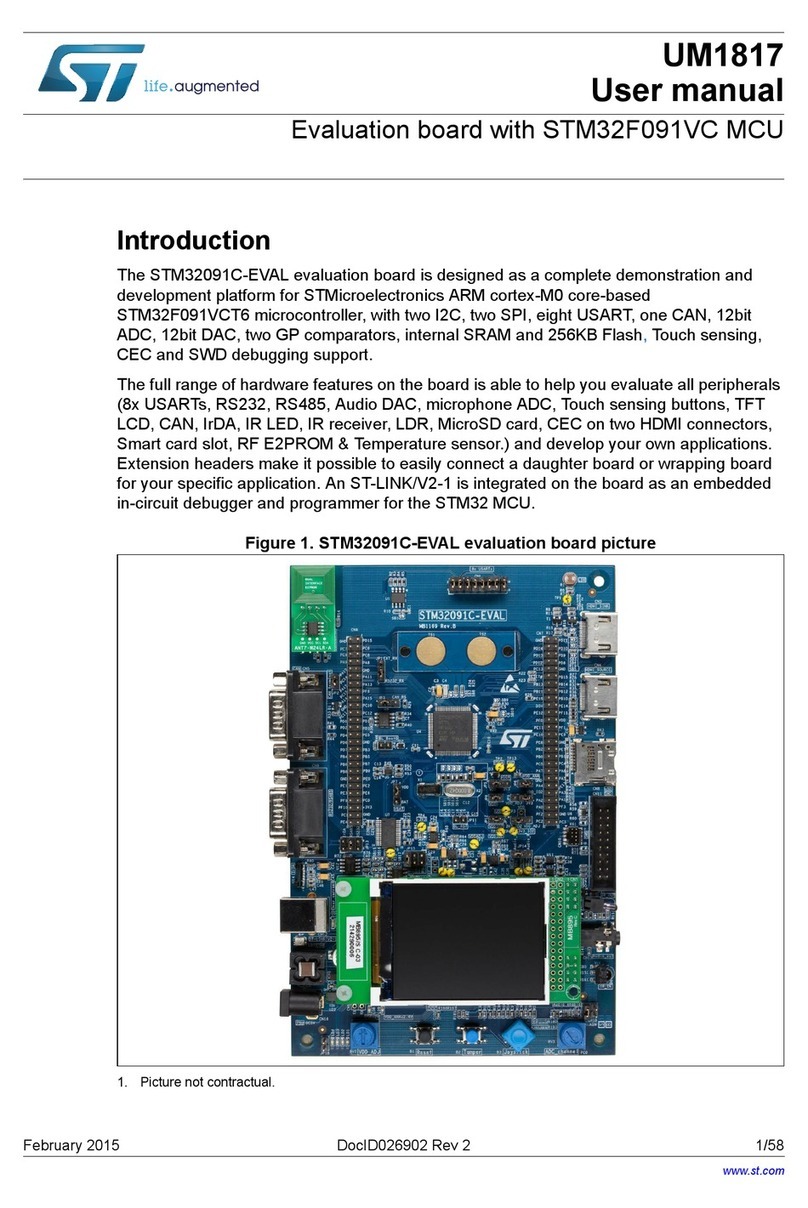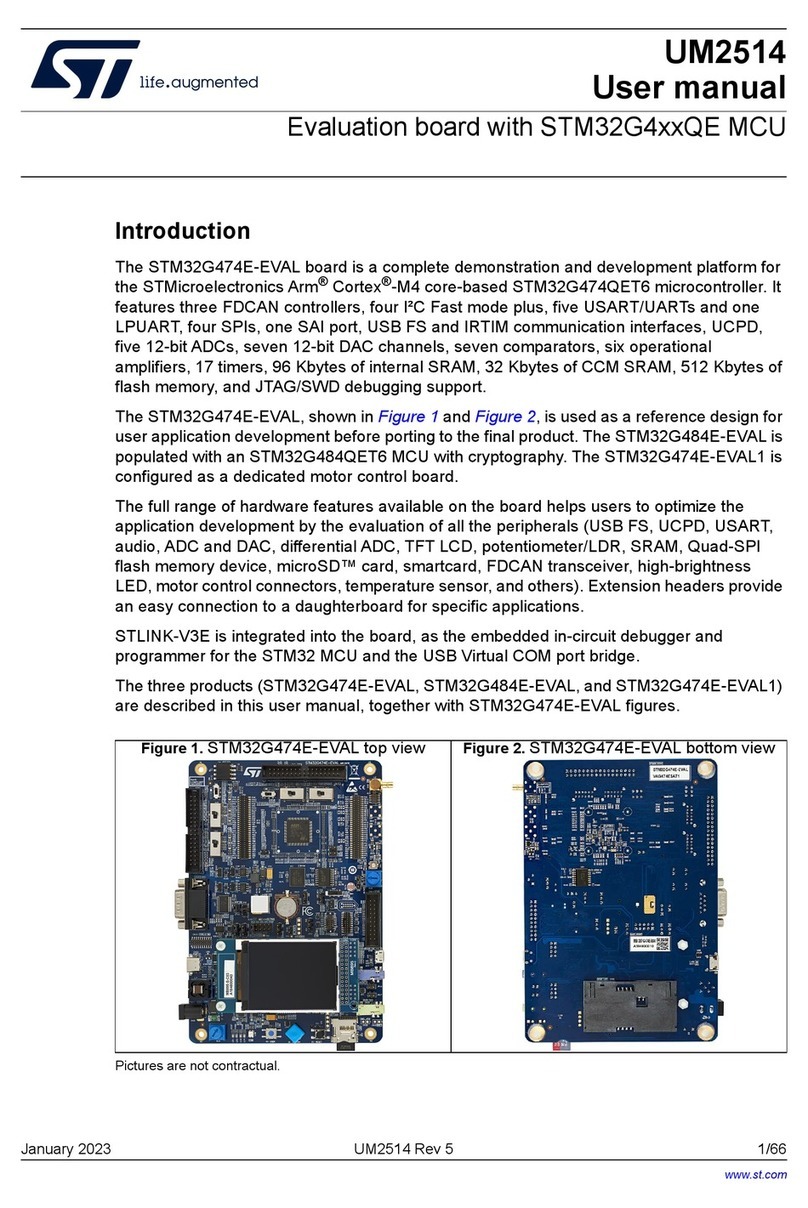
April 2010 Doc ID 15731 Rev 1 1/18
UM0704
User manual
STEVAL-MKI029V1: inclination analysis demonstration board
based on the STM8S207R6 MCU and LIS331DLH MEMS
Introduction
This document explains the functioning of the STEVAL-MKI029V1 inclination analysis
demonstration board based on STM8S207R6 MCU and LIS331DLH MEMS, and also
serves as a quick reference manual to operate the system.
The STEVAL-MKI029V1 inclination analysis demonstration board is a hand-held
demonstration board which detects the tilt on the X- and Y-axis of the board and provides a
visual representation of this information using an array of colored LEDs placed in two
circles. The demonstration board can detect the free-fall of the board and displays the
information for this event on the bi-color LED at the center of the board. The system can also
be configured to detect the circular motion of the board, in which LED patterns are
generated depending on board movement. The STEVAL-MKI029V1 also features a
demonstration mode. In this mode, different LED patterns are displayed irrespective of the
position/motion of the board, making the system suitable for exhibitions and seminars.
Three modes of operation have been implemented. Each mode can be operated with or
without the buzzer. An on-board button takes the demo from one mode to the next in a cyclic
manner. The system automatically enters standby mode when there is no motion for more
than 10 seconds and wakes up from standby when a vibration/motion is detected or the on-
board button is pressed.
The STEVAL-MKI029V1 also monitors the batteries, and allows the user to check their
status at any time. When low battery power is detected, the system alerts the user to
change the batteries and the system enters into no-operation mode to avoid malfunction.
The board is equipped with free MCU I/Os for the external interface, and a SWIM connector
is included to provide in-circuit debugging capability. The system is powered by 3 AAA
batteries of 1.5 V each. The board has a circular shape, with a diameter of 84 mm. The
board is RoHS compliant.
To summarize, the key features of the system are:
■Detects and provides visual/audio representation of:
– Tilt on the X-axis
– Tilt on the Y-axis
– Circular motion of the board
– Free-fall motion of the board
■Displays motion information using multi-colored LEDs or music/rhythm patterns
■Provides six different operating modes
■Offers a standby function for low power consumption
■Monitors the 3 AAA batteries and displays their status on the LEDs
■Provides additional MCU I/Os for future extensions
■Equipped with a SWIM connector for debugging capability
■Compliant with RoHS directives
www.st.com
